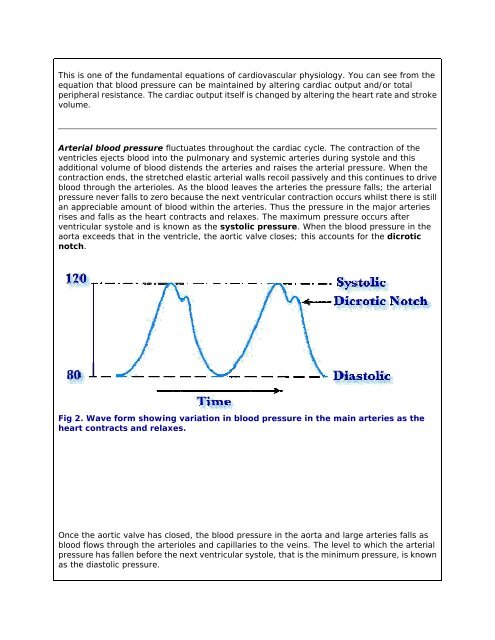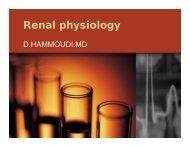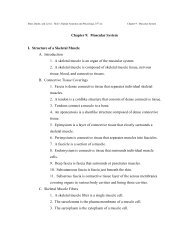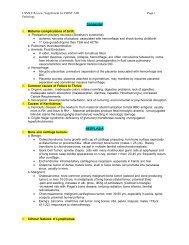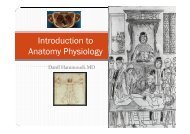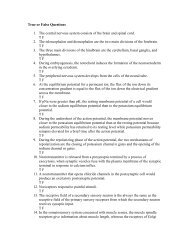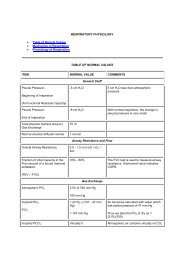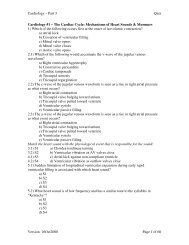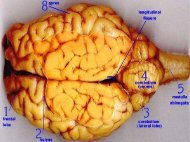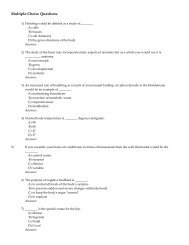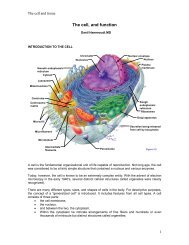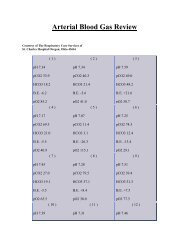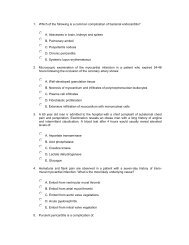Blood Vessels - Sinoe medical homepage.
Blood Vessels - Sinoe medical homepage.
Blood Vessels - Sinoe medical homepage.
You also want an ePaper? Increase the reach of your titles
YUMPU automatically turns print PDFs into web optimized ePapers that Google loves.
This is one of the fundamentalequations of cardiovascular physiology. You can see fromtheequationthat blood pressure can be maintained by altering cardiac output and/or totalperipheral resistance. The cardiac output itself is changed by altering the heart rate and strokevolume.Arterialblood pressure fluctuates throughout the cardiac cycle. The contraction of theventricles ejects blood into the pulmonary and systemic arteries during systole and thisadditional volume ofblood distends the arteries and raises the arterial pressure. When thecontraction ends, the stretched elastic arterial walls recoil passively and this continues to driveblood through the arterioles. Asthe blood leaves the arteries the pressure falls; the arterialpressuree never falls to zero because the next ventricular contraction occurs whilst there is stillan appreciable amount of bloodwithin the arteries. Thus the pressure in the major arteriesrises andfalls as theheart contracts and relaxes. The maximum pressure occurs afterventricular systole and is known as the systolic pressure. Whenthe blood pressure in theaorta exceeds that in the ventricle, the aortic valve closes; this accounts for the dicroticnotch.Fig 2. Wave form showing variation in blood pressure in the main arteries as theheart contracts and relaxes.Once theaortic valve has closed, the bloodpressure in the aorta and large arteries falls asblood flows through the arterioles and capillaries to the veins. The level to which the arterialpressuree has fallen before the next ventricular systole, that is the minimum pressure, is knownas the diastolic pressure.


